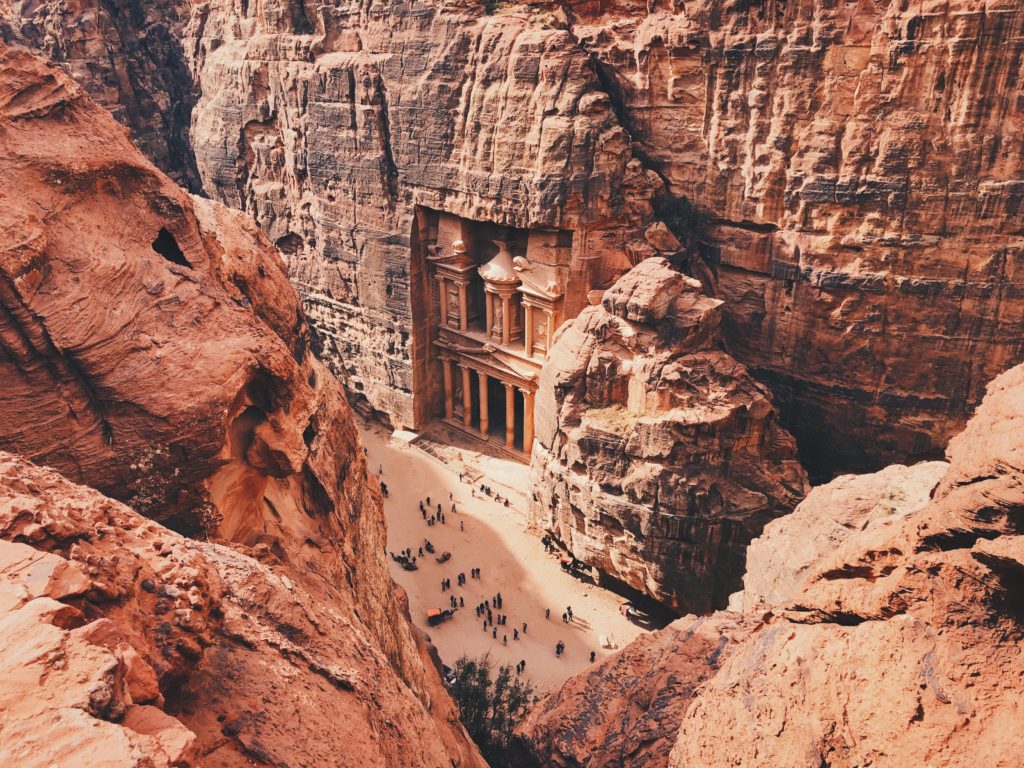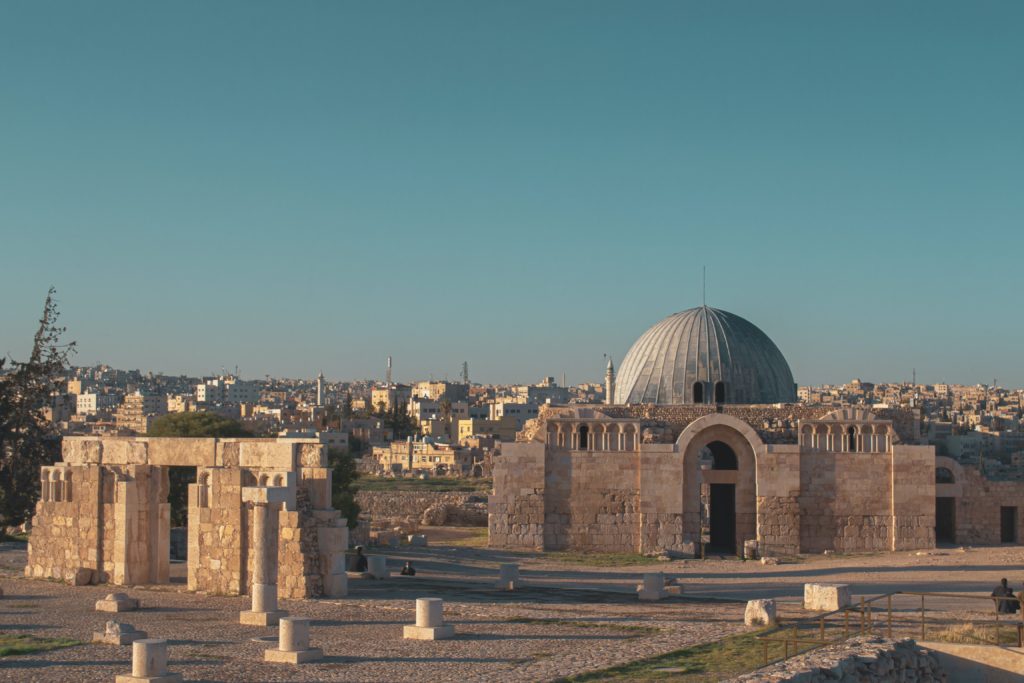Jordan At A Glance
Currency: Jordanian Dinar (1 dinar is equal to .709 US dollar)
Capital: Amman
Language: Arabic
Climate: Amman’s average temperature is 47 °F in January, 80 °F in July
Best Time to Visit: March-May, September-November
Popular Cuisine: Fattet Hummus, Mutabal, Al-rashoof, Malfuf, Warbat, Mansaf

Petra

Wadi Rum

Wadi Rum Desert

Aqaba

Amman Citadel




Petra
It was the capital city of the Nabatean kingdom in the 2nd century BC. The city enjoyed wealth until sea trade routes became more popular for trade and was damage in an earthquake in 363 AD. It was abandoned during the early Islamic era until it was rediscovered in 1812. The city’s treasury, Al-Khazneh, has been named one of the New 7 Wonders of the World.
Mt. Nebo
Mt. Nebo is where Moses looked out at the Promised Land before he died. Jericho, and sometimes even Jerusalem, are viewable from the summit. A sculpture of the bronze snake Moses held up to cure the Israelites’ disease is also located here.
Madaba
Madaba was an important city on the King’s Highway, a trade route. It is known for its mosaics, including the oldest known map of the Holy Land, which dates back to the 6th century. The map is located on the floor of St. George’s Church, which used to be a Byzantine cathedral.
Amman
Amman is the capital city of Jordan. The earliest remains of civilization found in Amman date back to 4000-3000 BC. Some interesting historical sites include the Amman Citadel, Hercules Temple, the Umayyad Palace, and the Byzantine Church.


